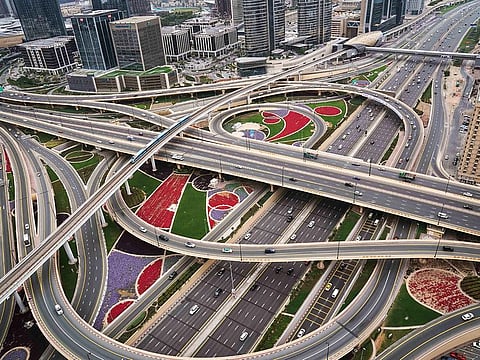72 projects in 4 years: Dubai RTA unveils roads, bridges and tunnels to ease traffic
Dubai’s mega infrastructure plan aims to slash congestion and transform city travel

Sheikh Hamdan bin Mohammed bin Rashid Al Maktoum, Crown Prince of Dubai, Deputy Prime Minister, Minister of Defence, and Chairman of The Executive Council of Dubai, reviewed the progress of key initiatives, including the Aerial Taxi project, rail network expansions, and The Future Loop pedestrian network, aimed at transforming Dubai into a connected, smart, and sustainable city.
Also Read: Dubai conducts first manned air taxi flight
The review was held with Mattar Al Tayer, Director General of Dubai’s Roads and Transport Authority (RTA), and Omar Sultan Al Olama, Minister of State for Artificial Intelligence, Digital Economy and Remote Work Applications.
72 new projects to boost connectivity
RTA’s integrated infrastructure plan covers 72 projects across 226 km of roads, 115 bridges and tunnels, and 11 key corridors — all aimed at easing congestion and improving connectivity across the emirate by 2027.
Key highlights:
72 new projects to be completed by end of 2027
Development of 226 km of roads across key areas
Construction of 115 bridges and tunnels to ease traffic flow
11 main corridors planned to enhance citywide connectivity
Part of RTA’s broader plan to integrate Dubai’s roads and transport network
A connected, sustainable Dubai
Sheikh Hamdan emphasised that Dubai’s continued investment in advanced infrastructure — from Metro expansion to pedestrian-friendly corridors — reflects the city’s long-term vision for connectivity, sustainability, and smart mobility, setting new benchmarks for global urban development.
Highlights include:
Rail expansion: Metro and Tram network to grow from 101 km to 131 km by 2029, adding 14 stations and expanding the fleet from 140 to 168 trains.
Aerial taxis: Fully electric eVTOLs capable of 160 km range and speeds up to 320 km/h, with vertiports under construction including a 3,100 m² facility near DXB.
Future Loop: 3,300 km of new walkways, 2,300 km of rehabilitated routes, and 110 pedestrian bridges and tunnels to boost year-round walkability.
The initiatives reflect Dubai’s long-term vision of a connected, sustainable, and human-centred urban environment, integrating advanced technology, smart mobility, and pedestrian-friendly infrastructure to set global benchmarks for city planning.
Sign up for the Daily Briefing
Get the latest news and updates straight to your inbox





